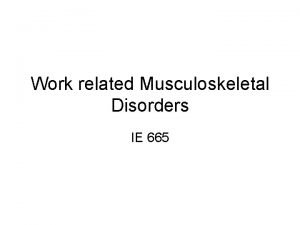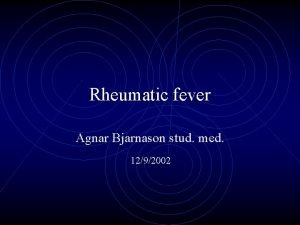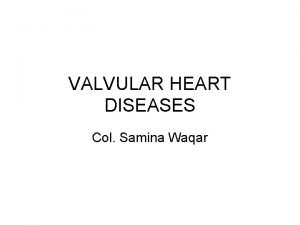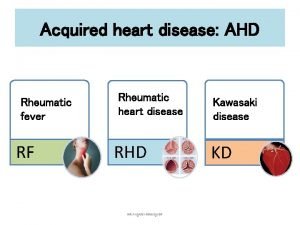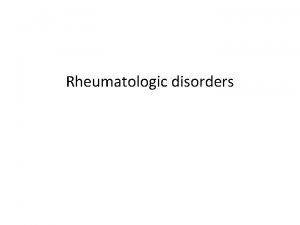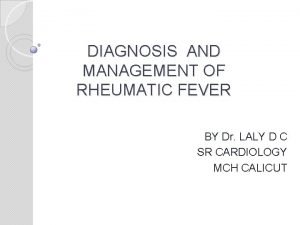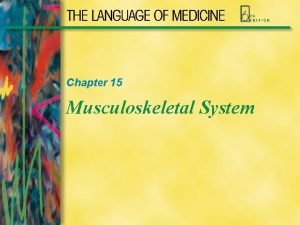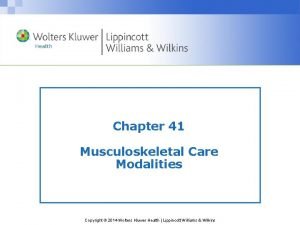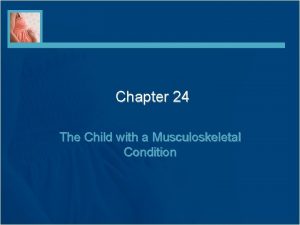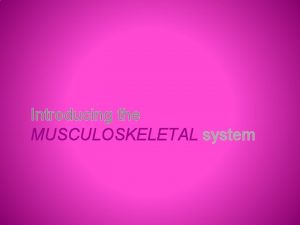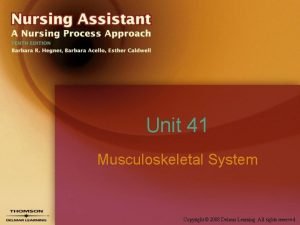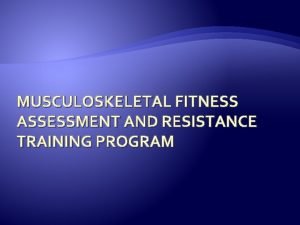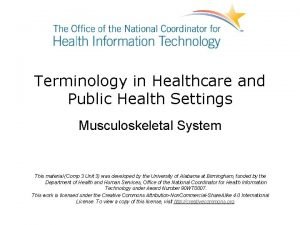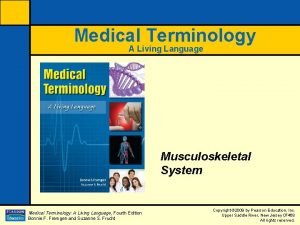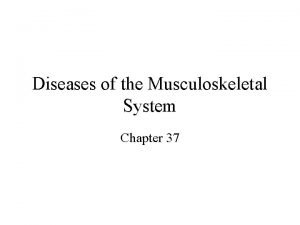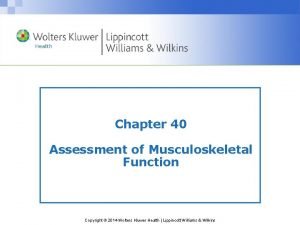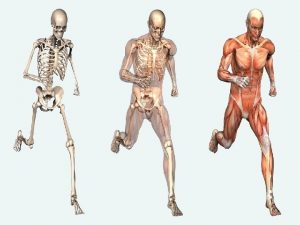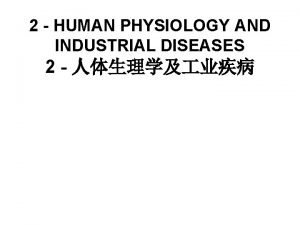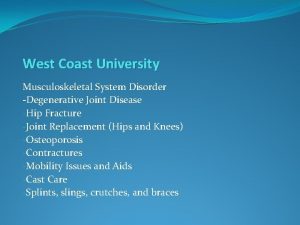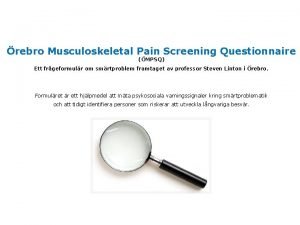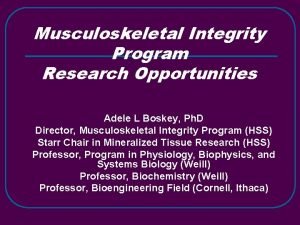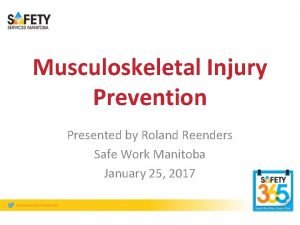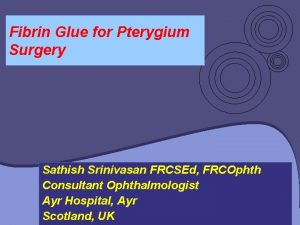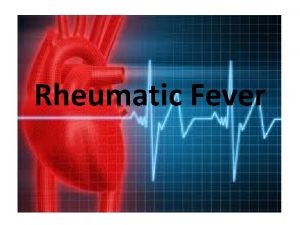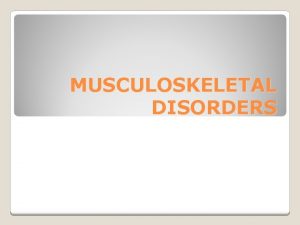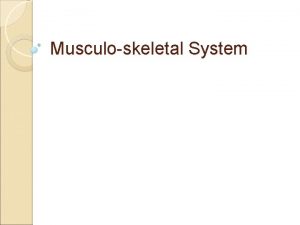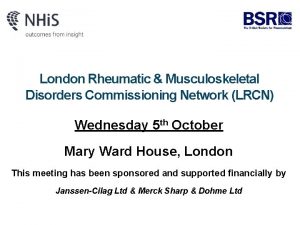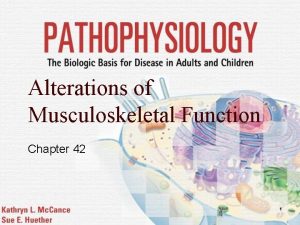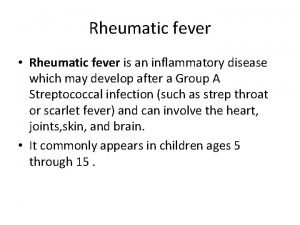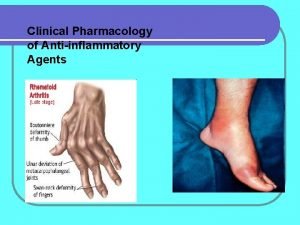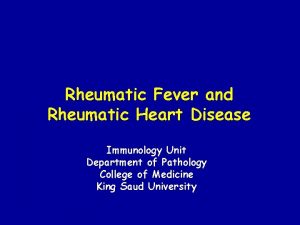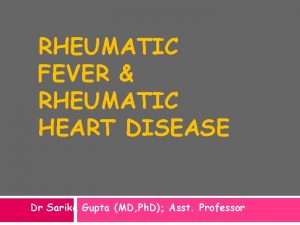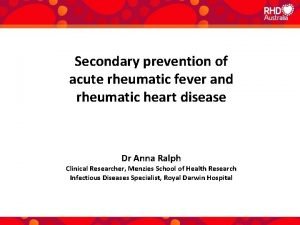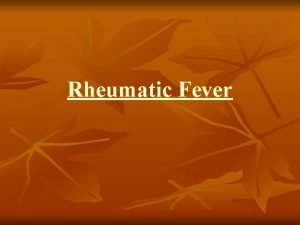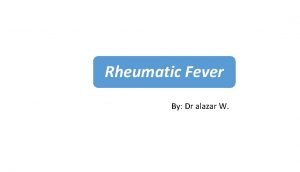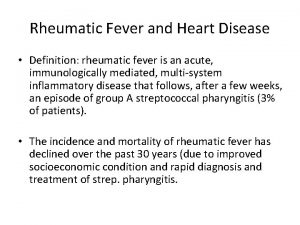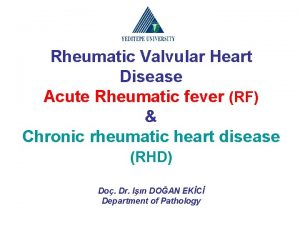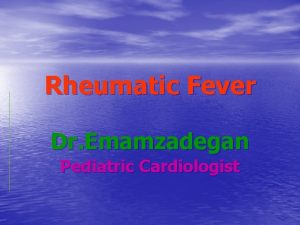Chapter 59 Disorders of Musculoskeletal Function Rheumatic Disorders
































- Slides: 32

Chapter 59 Disorders of Musculoskeletal Function: Rheumatic Disorders Copyright © 2014 Wolters Kluwer Health | Lippincott Williams & Wilkins

Arthritis • Applied to more then 100 rheumatic diseases • Primary arthritis – Those affecting body systems in addition to the musculoskeletal system – Resulting from an immune response • Secondary arthritis – Rheumatoid conditions limited to a single or few diarthrodial joints – Resulting from a degenerative process and the resulting joint irregularities that occur as the bone attempts to remodel itself Copyright © 2014 Wolters Kluwer Health | Lippincott Williams & Wilkins

Systemic Autoimmune Rheumatic Diseases • A group of chronic disorders characterized by diffuse inflammatory lesions and degenerative changes in connective tissue – These disorders share similar clinical features and may affect many of the same organs Copyright © 2014 Wolters Kluwer Health | Lippincott Williams & Wilkins

Systemic Autoimmune Rheumatic Diseases • Rheumatoid arthritis (RA) • Systemic lupus erythematosus (SLE) • Systemic sclerosis/scleroderma • Polymyositis • Dermatomyositis Copyright © 2014 Wolters Kluwer Health | Lippincott Williams & Wilkins

Characteristics of Rheumatoid Arthritis • Associated with extra-articular as well as articular manifestations • Usually has an insidious onset marked by systemic manifestations such as fatigue, anorexia, weight loss, and generalized aching and stiffness. • Characterized by exacerbations and remissions • May involve only a few joints for brief durations, or it may become relentlessly progressive and debilitating Copyright © 2014 Wolters Kluwer Health | Lippincott Williams & Wilkins

Symptoms of RA • Fatigue • Weakness • Anorexia • Weight loss • Low-grade fever • Anemia Copyright © 2014 Wolters Kluwer Health | Lippincott Williams & Wilkins

Figure 59. 2 Clinical manifestations of rheumatoid arthritis featuring (A) hand finger manifestations and (B) destructive joint changes. Copyright © 2014 Wolters Kluwer Health | Lippincott Williams & Wilkins

Criteria for Rheumatoid Arthritis • Morning stiffness at least 1 hour for at least 6 weeks • Swelling of three or more joints for at least 6 weeks • Swelling of wrist, metacarpophalangeal or proximal interphalangeal joints for 6 or more weeks • Systemic joint swelling • Hand roentgenogram changes typical of RA • Rheumatoid nodules • Serum rheumatoid factor (RF) Copyright © 2014 Wolters Kluwer Health | Lippincott Williams & Wilkins

Figure 59. 3 Rheumatoid nodule. (A) Subcutaneous finger mass on an individual with rheumatoid arthritis. (B) Microscopic view of a rheumatoid nodule shows a central area of necrosis surrounded by macrophages and a chronic inflammatory infiltrate. (From Rubin R. , Strayer D. (Eds. ) (2012). Rubin’s pathology: Clinicopathologic foundations of medicine (6 th ed. , p. 1259). Philadelphia, PA: Lippincott Williams & Wilkins. ) Copyright © 2014 Wolters Kluwer Health | Lippincott Williams & Wilkins

Treatment Goals for a Person with RA • Reduce pain • Minimize stiffness and swelling • Maintain mobility • Become an informed health care consumer – Rest – Therapeutic exercises – Medications Copyright © 2014 Wolters Kluwer Health | Lippincott Williams & Wilkins

Characteristics of Systemic Lupus Erythematosus (SLE) • Chronic inflammatory disease that can affect any organ system • Cause is unknown • Characterized by formation of autoantibodies and immune complexes • B-cell hyperreactivity • Increased production of antibodies against self (autoantibodies) and nonself antigens Copyright © 2014 Wolters Kluwer Health | Lippincott Williams & Wilkins

Characteristics of Systemic Lupus Erythematosus (SLE) (cont. ) • The autoantibodies can directly damage tissues or combine with corresponding antigens to form tissue-damaging immune complexes. − Autoantibodies • Antinuclear antibodies (ANA) • Other antibodies • Platelets • Coagulation factors • Red blood cell surface antigens Copyright © 2014 Wolters Kluwer Health | Lippincott Williams & Wilkins

Categories of Clinical Manifestations of SLE • Constitutional • Musculoskeletal • Dermatologic • Cardiovascular • Pulmonary • Renal • Neuropsychiatric Copyright © 2014 Wolters Kluwer Health | Lippincott Williams & Wilkins

Figure 59. 5 Clinical manifestations of SLE. Copyright © 2014 Wolters Kluwer Health | Lippincott Williams & Wilkins

Treatment of SLE • Focuses on managing the acute and chronic symptoms • Communication between provider and patient are the basis for disease management • Goals: preventing loss of organ function, reducing exacerbatio minimizing disability, and prevent complications • Medications: • NSAIDS- control fever, arthritis and mild pleuritis • Antimalarial- treat cutaneous and musculoskeletal manifestations • Corticosteroids- renal and CNS disorders Copyright © 2014 Wolters Kluwer Health | Lippincott Williams & Wilkins

Systemic Sclerosis/Scleroderma • Autoimmune disease of connective tissue characterized by excessive collagen deposition in the skin and internal organs • Diffuse or generalized form – Skin changes involve the trunk and proximal extremities. • Limited or CREST variant – Hardening of the skin (scleroderma) is limited to the hands and face. Copyright © 2014 Wolters Kluwer Health | Lippincott Williams & Wilkins

Manifestations of the CREST Syndrome • Calcinosis (calcium deposits in the subcutaneous tissue that erupt through the skin) • Raynaud phenomenon • Esophageal dysmobility • Sclerodactyly (localized scleroderma of the fingers) • Telangiectasia Copyright © 2014 Wolters Kluwer Health | Lippincott Williams & Wilkins

Types of Seronegative Spondyloarthropathies (Sp. A) • Inflammation and involvement of the peripheral joints with an absence of RF – Ankylosing spondylitis • Juvenile ankylosing spondylitis – Reactive arthritis, enteropathic arthritis (i. e. , inflammatory bowel disease) – Psoriatic arthritis Copyright © 2014 Wolters Kluwer Health | Lippincott Williams & Wilkins

Figure 59. 6 Clinical manifestations of ankylosing spondylitis. Copyright © 2014 Wolters Kluwer Health | Lippincott Williams & Wilkins

Diagnosis of AS • Methods of Assessing Mobility and Detecting Sacroiliitis • Pressure on the sacroiliac joints with the person in a forward-bending position to elicit pain and muscle spasm • Measurement of the distance between the tips of fingers and the floor in a bent-over position with straight knees, • Modified Schöber test in which contralateral flexion of the back is measured • Measurement of chest expansion may be used as an indirect indicator of thoracic involvement. Copyright © 2014 Wolters Kluwer Health | Lippincott Williams & Wilkins

Reiter Syndrome • Clinical manifestation of reactive arthritis • Accompanied by extra-articular symptoms such as uveitis, bowel inflammation, carditis • Develops in a genetically susceptible host after a bacterial infection due to Chlamydia trachomatis in the genitourinary tract • Salmonella, Shigella, Yersinia, or Campylobacter in the gastrointestinal tract Copyright © 2014 Wolters Kluwer Health | Lippincott Williams & Wilkins

Subgroups of Psoriatic Arthritis • Oligoarticular or asymmetric (48%) • Spondyloarthropathy (24%) • Polyarticular or symmetric (18%) • Distal interphalangeal (8%) • Mutilans (2%) Copyright © 2014 Wolters Kluwer Health | Lippincott Williams & Wilkins

Osteoarthritis (OA) • Degenerative joint disease • Primary variants of OA occur as localized or generalized syndromes • Secondary OA has a known underlying cause such as – congenital or acquired defects of joint structures, trauma, metabolic disorders, or inflammatory diseases. Copyright © 2014 Wolters Kluwer Health | Lippincott Williams & Wilkins

Causes of Osteoarthritis (OA) Chart 59. 1 • Postinflammatory diseases • Posttraumatic disorders • Anatomic or bony disorders • Metabolic disorders • Neuropathic arthritis • Hereditary disorders of collagen • Idiopathic or primary variants Copyright © 2014 Wolters Kluwer Health | Lippincott Williams & Wilkins

Osteoarthritis Induced Joint Changes • Manifestations (Table 59. 1) • Progression – A progressive loss of articular cartilage – Joint pain – Synovitis – Limitation of motion – Osteophytes – Joint instability • Bone spurs – Stiffness – Deformity Copyright © 2014 Wolters Kluwer Health | Lippincott Williams & Wilkins

Figure 59. 7 (A) A joint normally undergoes deformation of the articular cartilage and the subchondral bone when carrying a load. This maximizes the contact area and spreads the force of the load. (B) If the joint does not deform with a load, the stresses are concentrated and the joint breaks down. Copyright © 2014 Wolters Kluwer Health | Lippincott Williams & Wilkins

Metabolic and Endocrine Diseases Associated with Joint Symptoms • Amyloidosis • Gout syndrome • Osteogenesis imperfecta • Diabetes mellitus • Hyperparathyroidism • Thyroid disease • AIDS • Hypermobility syndromes Copyright © 2014 Wolters Kluwer Health | Lippincott Williams & Wilkins

Gout Syndrome • Acute gouty arthritis with recurrent attacks of severe articular and periarticular inflammation • Tophi or the accumulation of crystalline deposits in articular surfaces, bones, soft tissue, and cartilage • Gouty nephropathy or renal impairment • Uric acid kidney stones Copyright © 2014 Wolters Kluwer Health | Lippincott Williams & Wilkins

Types of Gout • Primary gout – Designate cases in which the cause of the disorder is unknown or an inborn error in metabolism – Characterized primarily by hyperuricemia and gout • Secondary gout – The cause of the hyperuricemia is known but the gout is not the main disorder Copyright © 2014 Wolters Kluwer Health | Lippincott Williams & Wilkins

Figure 59. 10 Pathogenesis of hyperuricemia and gout. Purine nucleotides are synthesized from nonpurine precursors or derived from preformed purines in the diet. Purine nucleotides are catabolized to hypoxanthine or incorporated into nucleic acids. The degradation of nucleic acids and dietary purines also produces hypoxanthine, which is converted into uric acid and then excreted into the urine. (From Rubin R. , Strayer D. (Eds. ) (2012). Rubin’s pathology: Copyright © 2014 Wolters Kluwer Health | Lippincott Williams & Wilkins

Figure 59. 11 Gout. (A) Gouty tophi project from the fingers as rubbery nodules. (B) A section from a tophus shows extracellular masses of urate crystals. (From Rubin R. , Strayer D. (Eds. ) (2012). Rubin’s pathology: Clinicopathologic foundations of medicine (6 th ed. , p. 1262). Philadelphia, PA: Lippincott Williams & Wilkins. ) Copyright © 2014 Wolters Kluwer Health | Lippincott Williams & Wilkins

Objectives for Treatment of Gout • Termination and prevention of the acute attacks of gouty arthritis • Correction of hyperuricemia • Inhibition of further precipitation of sodium urate • Absorption of urate crystal deposits already in the tissues Copyright © 2014 Wolters Kluwer Health | Lippincott Williams & Wilkins
 Chapter 6 musculoskeletal system diseases and disorders
Chapter 6 musculoskeletal system diseases and disorders Work related musculoskeletal disorders definition
Work related musculoskeletal disorders definition Acute rheumatic fever
Acute rheumatic fever Samina waqar
Samina waqar Beau's lines autoimmune disease
Beau's lines autoimmune disease Soap brain md
Soap brain md Rheumatic heart disease
Rheumatic heart disease Rheumatic heart disease causes
Rheumatic heart disease causes Vijaya's echo criteria
Vijaya's echo criteria The musculoskeletal system chapter 21
The musculoskeletal system chapter 21 Chapter 15 musculoskeletal system step by step
Chapter 15 musculoskeletal system step by step Chapter 40 musculoskeletal care modalities
Chapter 40 musculoskeletal care modalities Buck's extension traction
Buck's extension traction Musculoskeletal system
Musculoskeletal system Unit 41 musculoskeletal system
Unit 41 musculoskeletal system Musculoskeletal system
Musculoskeletal system Contoh soal koding icd 10
Contoh soal koding icd 10 Dorsopathies adalah
Dorsopathies adalah Musculoskeletal fitness assessment
Musculoskeletal fitness assessment Musculoskeletal pronounce
Musculoskeletal pronounce Language
Language Diseases of the musculoskeletal system
Diseases of the musculoskeletal system Assessment of the musculoskeletal system
Assessment of the musculoskeletal system Assessment of the musculoskeletal system
Assessment of the musculoskeletal system Musculoskeletal system
Musculoskeletal system West coast musculoskeletal
West coast musculoskeletal örebro musculoskeletal pain screening questionnaire
örebro musculoskeletal pain screening questionnaire Musculoskeletal
Musculoskeletal Musculoskeletal integrity
Musculoskeletal integrity Musculoskeletal injury
Musculoskeletal injury Musculoskeletal
Musculoskeletal Musculoskeletal
Musculoskeletal Sathish srinivasan
Sathish srinivasan

